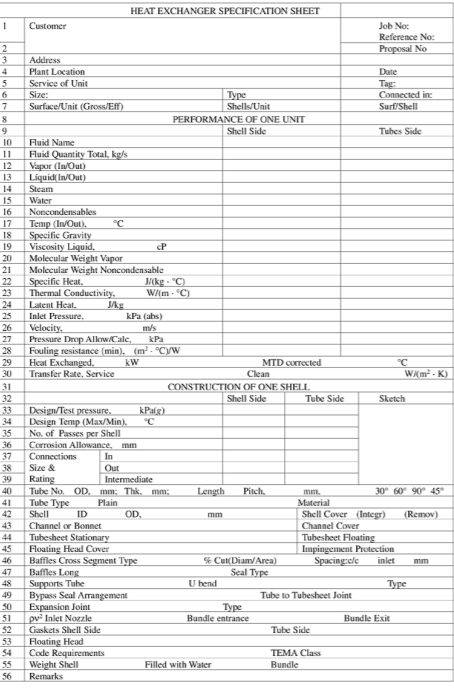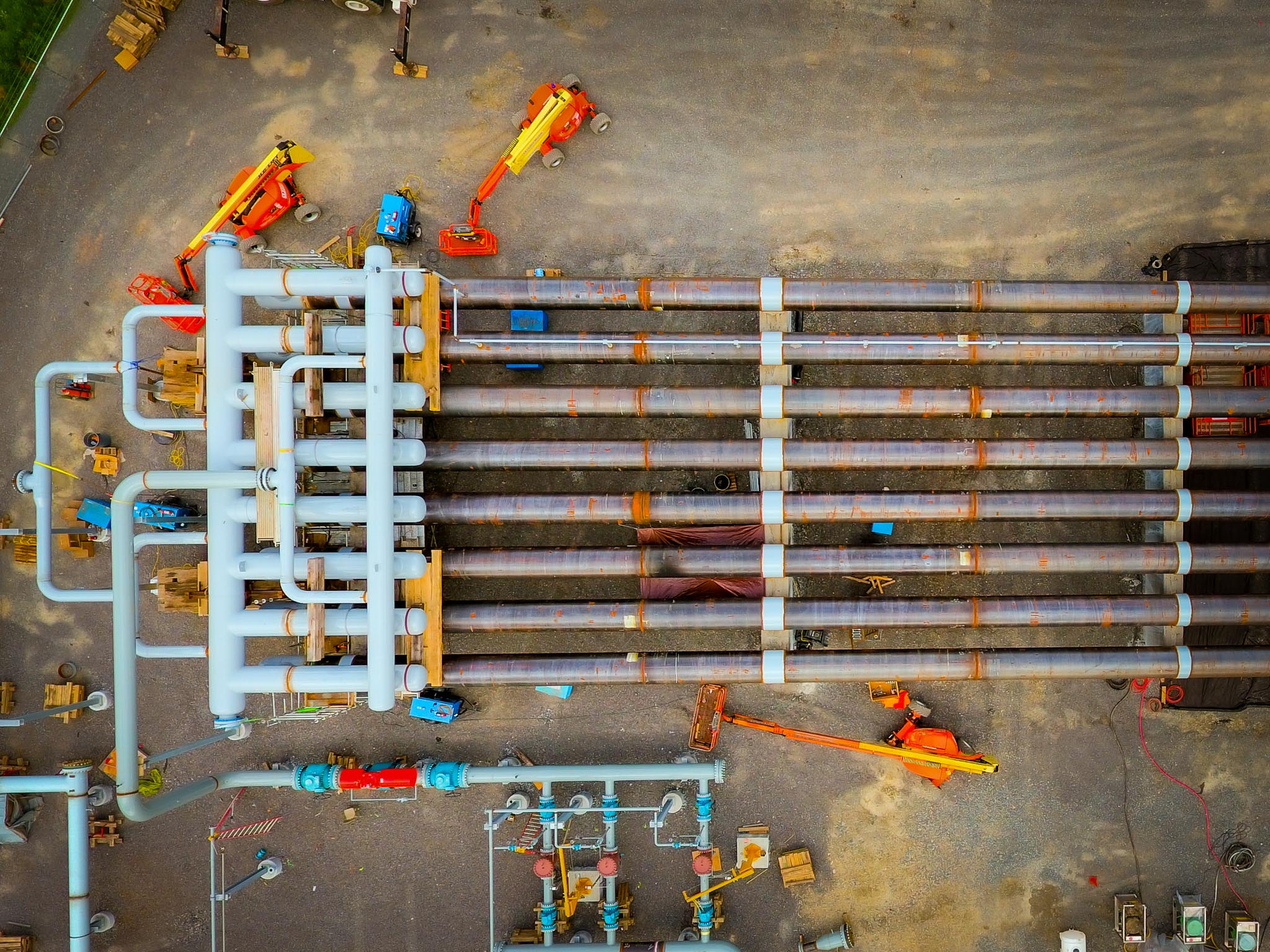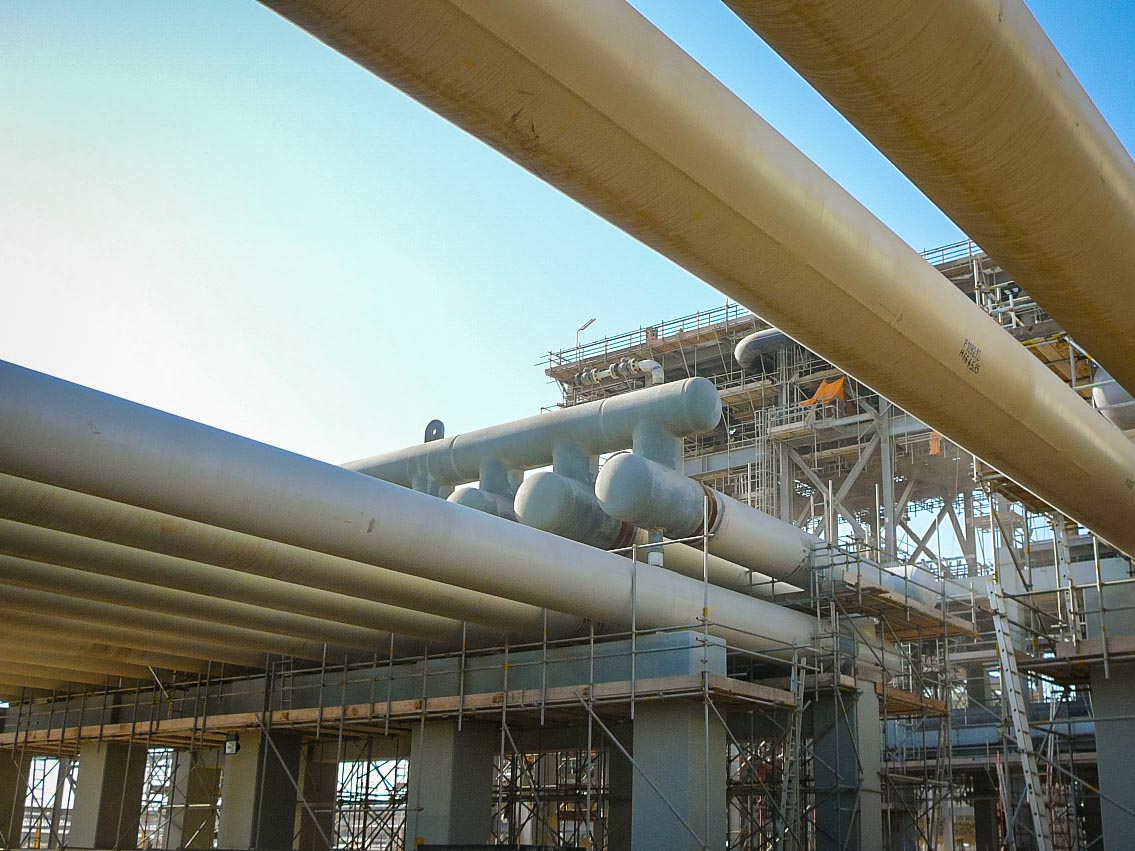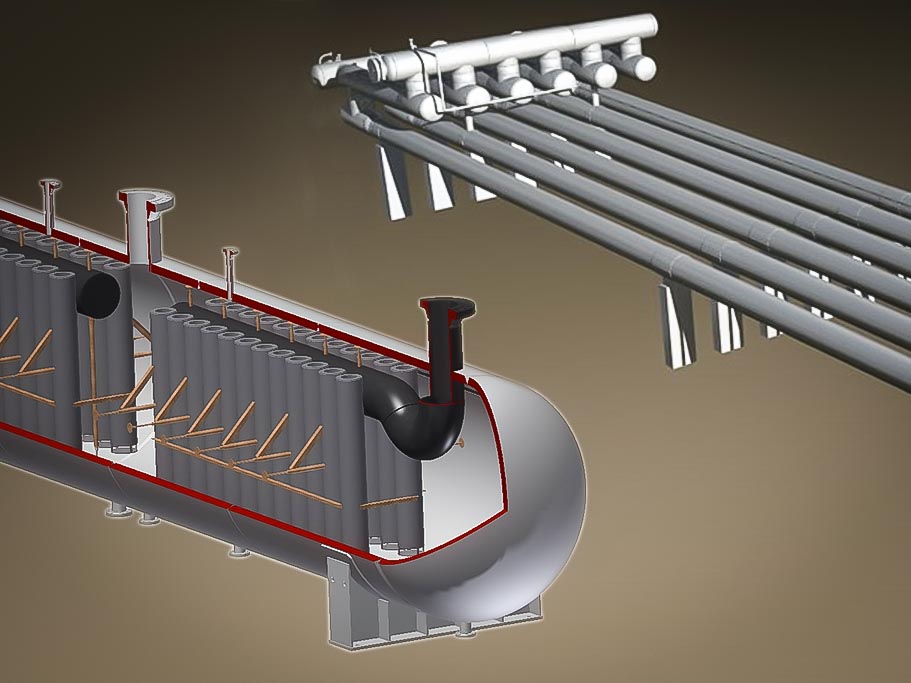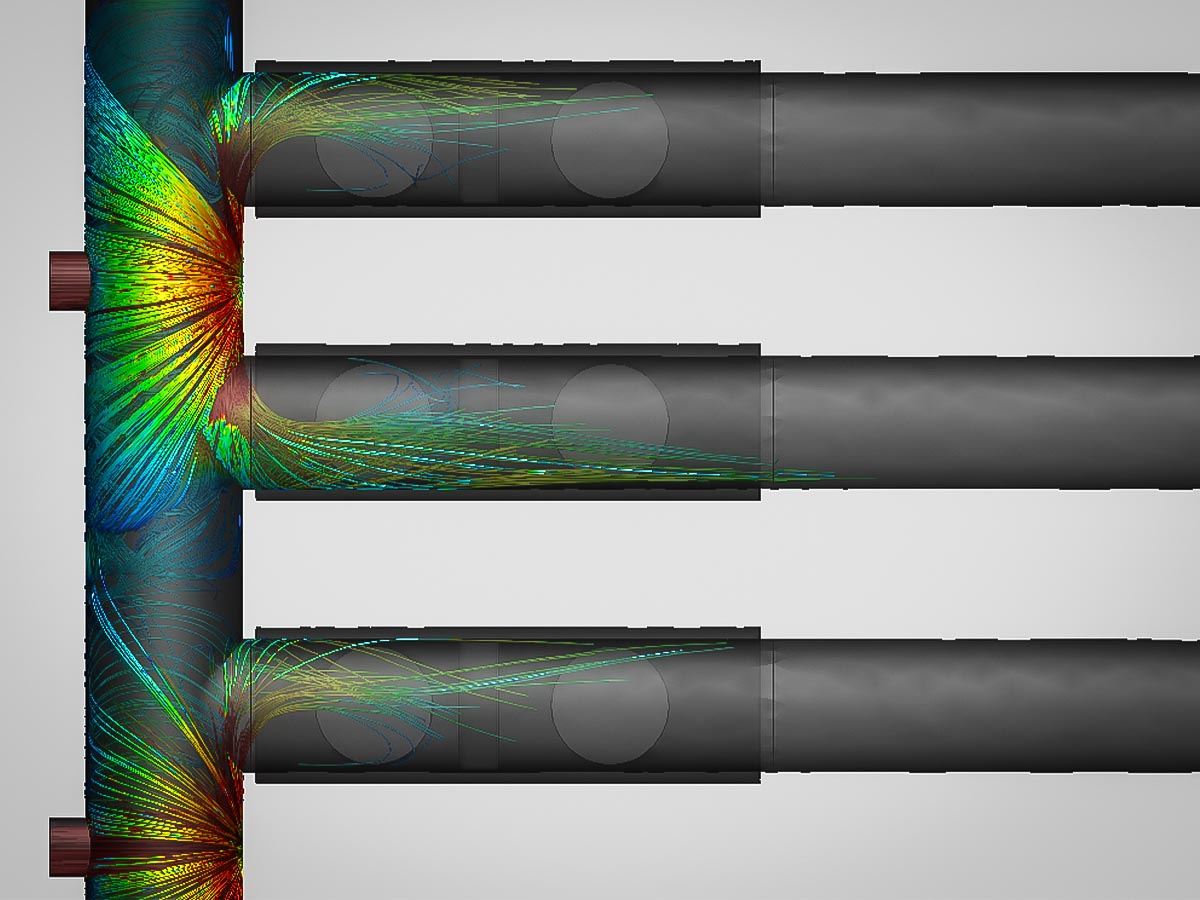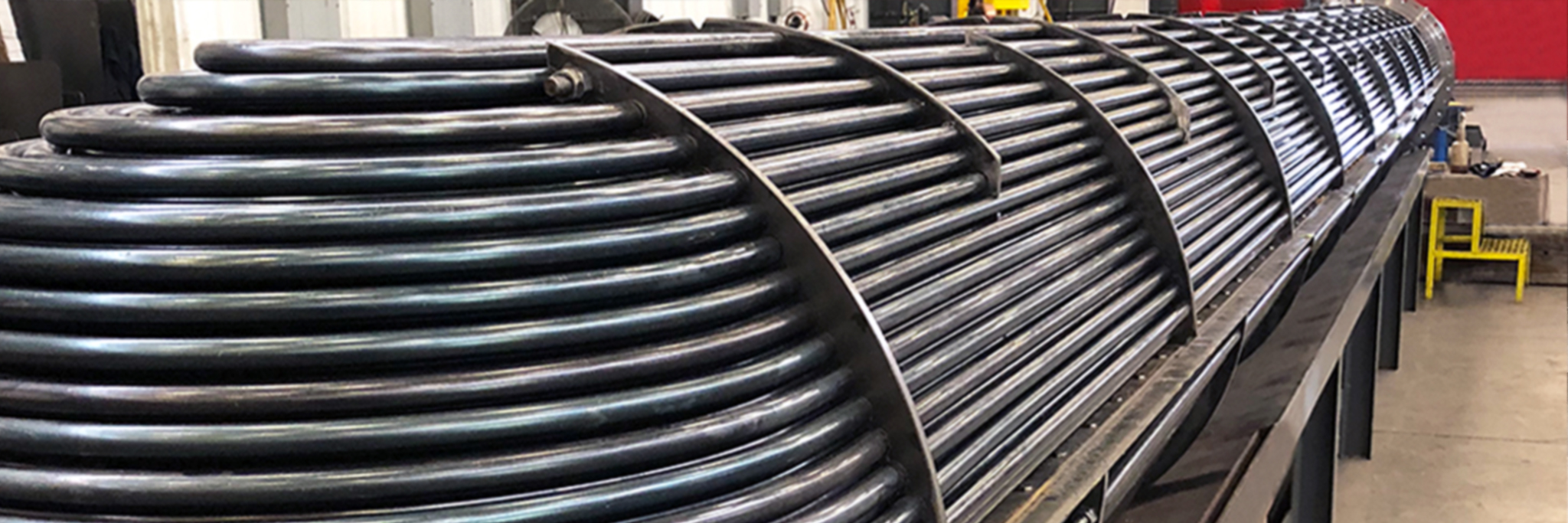
The design of a shell and tube exchanger requires an experienced thermal engineer than understands not only how to “design or rate” the heat exchanger, but also one that can be easily manufactured.. These nuances require years of experience and an understanding of manufacturing and sourcing, not just thermal design.
Design Software
The thermal sizing of your heat exchanger is typically done using HTRI, ASPENtech or other similar software developed/edited by your OEM. HTRI is the industry standard. ASPENTech is less conservative than HTRI and is best for single phase applications.
The mechanical design of your heat exchanger is typically completed with Compress, RCS, ASPEN, and/or other similar programs. These programs will evaluate nozzles flow, thicknesses, etc., and also often provide a starting point for drawings.
The image to the right is an example of the standard TEMA data sheet that is often filled out to give the thermal engineer the proper information to size the heat exchanger. The thermal engineer will design the heat exchanger based on the thermal information you provide, they will then provide an output of the TEMA spec sheet with all of the mechanical information (# of tubes, baffle cut, etc) that is needed to build the exchanger.
Sizing the correct and most economical exchanger for your application requires a mix of understanding the impacts of site flow conditions and operational needs. Below are some highlights of how these different characteristics can affect the design of your heat exchanger.
Site Conditions
- Flow Rates – different flow rates require different size exchangers. The size of your exchanger will be a direct result of the size of your flow rates. As an example, large shell side flows need big shells to distribute their flow without vibrational or pressure drop concerns.
- Inlet vs. outlet temperatures – or in other words the amount of heat exchange needed out the unit. Different types of shell and tubes work better for different temperature gradients. For instance, K units are built for boiling the shell side fluid. Split shell (F Type) designs are good for temperature crosses where the shell and the tube side outlet close the same temperature.
- Pressures – fluids flow differently at different pressures. All materials will be thicker at higher pressures. As an example, thicker tubes transfer heat less effectively than thinner tubes. Heavier exchangers are harder to build and require more site crane capacity.
- Physical properties of the fluids – different fluids transfer heat with varying degrees of efficiency. Example: water freezes at higher temperatures than glycol. Some fluids are more viscous than other fluids. The flow properties through the tubes and around the baffles will depend on these properties. Heavy dirty fluids are more likely to muck up the internals of an exchanger causing performance issues. In this case, you may want to design the exchanger to have excess surface area for heat transfer. The thermal designer will use this information to change the tube pitch, baffle type, and maybe even TEMA type of exchanger to provide a better performing unit.
- Pressure Drops – The higher the velocity, the more pressure drop created. How much pressure drop does your piping system allow between the inlet and outlet of the exchanger? The more you a lot to the exchanger, the smaller it can be.
- Materials of Construction – every material transfers heat differently. Example: copper conducts heat better than steel. Chrome withstands high temperatures better than carbon steel. Stainless steel can withstand both temperature and corrosion better than chrome and carbon steel. The thermal engineer will design the exchanger based on the material needs outlined by the customer.
Operations and Site Access
- Length – A LONG AND SKINNY HEAT EXCHANGER IS THE MOST ECONOMICAL DESIGN. A thermal engineer will always design a unit with smallest diameter and longest length if given that space. This is why it’s critical to let the engineer know if there are site restrictions on length.
- Diameter – If two identical thermally rated units exist, the smaller diameter of the two will be cheaper. It’s more expensive to build a larger diameter unit. It requires you to drill and push more tubes, etc.. However, the pressure drop and vibrations will likely better.
- Connections – when designing an exchanger, it is critical to understand the piping leading up to it. An identical flow rate coming from a 12” nozzle will experience and causing higher stresses and higher velocities than the same flow out of an 18” nozzle. It’s relatively easy to add “small” connections during the final design of the unit. However, for the original design to work properly, it’s important (and smart to do to avoid a large change order) to provide the thermal engineer the correct inlet and outlet connections to the shell and tube side prior to finalizing a design.
- Maintenance – how often will you look to clean your exchanger? Different channel/head/shell types are easier to repair, replace, and clean. These designs can affect the thermal performance of your exchanger.
For a more detailed look into how the internals of your shell and tube heat exchanger affect your design, please see our other article that discusses baffles, tube pitch, and much more.
Other Technical Articles
As a leader in Slug Catcher design, here are some guidelines every engineer should know.
Choosing the type of Slug Catcher equipment for your next project? This breakdown will help guide your decision.
Understanding the separation methods for your finger-type slug catcher.
WHY US
Taylor Forge Engineered Systems
has continued the reputation of traditionally dependable products
to a variety of industries.
Integrity
We don’t compromise our practices and we won’t cut corners.

